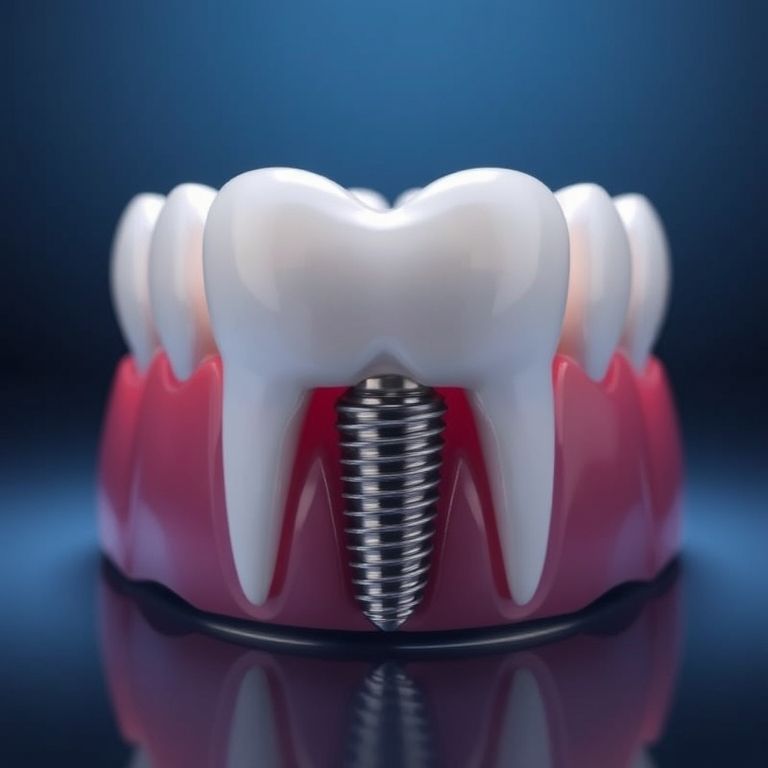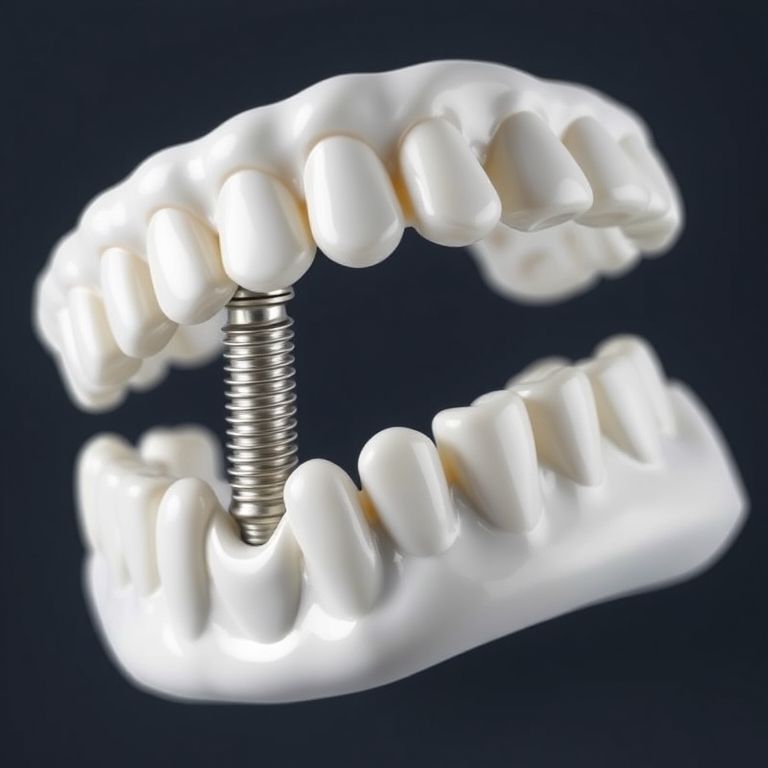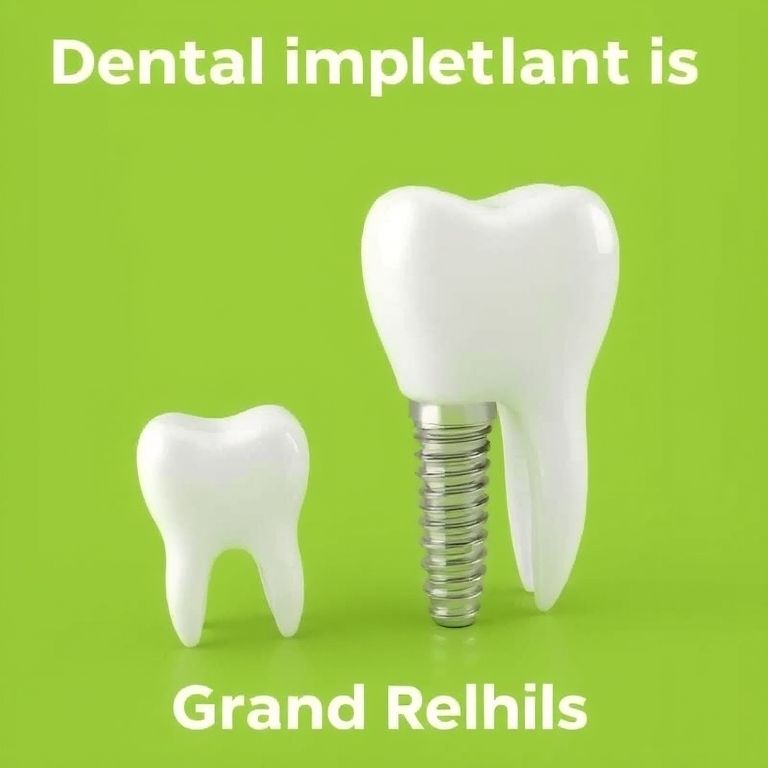$399 Tooth Implant Price List
2. What Are Dental Implants?
Dental implants are artificial tooth roots made of biocompatible materials like titanium, which are surgically placed into the jawbone. They provide a strong foundation for fixed or removable replacement teeth that are designed to match your natural teeth. Unlike dentures or bridges, dental implants are a long-term solution that can last a lifetime with proper care.

Key Components of a Dental Implant:
- Implant Post: The screw that serves as the root for the new tooth.
- Abutment: The connector that supports and holds the crown.
- Crown: The visible part of the tooth that is custom-made to match your natural teeth.
3. Types of Dental Implants
There are several types of dental implants, each suited for different needs and conditions:
3.1 Endosteal Implants
These are the most common type of dental implants, placed directly into the jawbone. They are typically shaped like small screws, cylinders, or plates.
3.2 Subperiosteal Implants
These implants are placed under the gum but above the jawbone. They are used for patients who do not have enough healthy jawbone and cannot undergo a bone augmentation procedure.
3.3 Zygomatic Implants
These are the least common type and are placed in the cheekbone (zygoma) rather than the jawbone. They are used in cases where there is significant bone loss in the upper jaw.
4. The $399 Tooth Implant: Myth or Reality?
The $399 tooth implant has become a buzzword in the dental industry, but what does it really entail? Is it a marketing gimmick, or is it a genuine offer? Let’s break it down.
4.1 What Does the $399 Cover?
The $399 price tag typically covers the cost of the implant post only. It does not include the abutment, crown, or any additional procedures such as bone grafting, extractions, or consultations. These additional costs can significantly increase the overall price.
4.2 Is It a Good Deal?
While the $399 price point may seem attractive, it’s essential to consider the quality of the materials used, the experience of the dental professional, and the long-term outcomes. Cheap implants may not always be the best option, especially if they compromise on quality.
5. Factors Influencing the Cost of Dental Implants
The cost of dental implants can vary widely based on several factors:
5.1 Geographic Location
The cost of living and the average price of dental services in your area can significantly impact the price of dental implants.
5.2 Dentist’s Experience and Expertise
More experienced dentists may charge higher fees, but they also offer a higher likelihood of successful outcomes.
5.3 Type of Implant and Materials Used
High-quality materials like titanium and zirconia are more expensive but offer better durability and biocompatibility.
5.4 Additional Procedures
Procedures like bone grafting, sinus lifts, or extractions can add to the overall cost.
5.5 Insurance Coverage
Some dental insurance plans may cover a portion of the cost of implants, but coverage varies widely.
6. The $399 Tooth Implant Price List: What’s Included?
To better understand the $399 tooth implant, let’s break down what is typically included in this price:
| Component | Included in $399? | Additional Cost |
|---|---|---|
| Implant Post | Yes | – |
| Abutment | No | 200−200−500 |
| Crown | No | 1,000−1,000−3,000 |
| Consultation Fee | No | 100−100−300 |
| X-rays and Imaging | No | 100−100−200 |
| Bone Grafting (if needed) | No | 500−500−3,000 |
| Extraction (if needed) | No | 75−75−450 |
| Anesthesia | No | 200−200−600 |
As you can see, the 399priceisjustthetipoftheiceberg.Thetotalcostcaneasilyexceed399priceisjustthetipoftheiceberg.Thetotalcostcaneasilyexceed3,000 when all additional components and procedures are factored in.
7. Pros and Cons of Low-Cost Dental Implants
7.1 Pros
- Affordability: The initial cost is lower, making it accessible to more people.
- Quick Solution: Some low-cost providers offer same-day implants.
- Basic Functionality: They can restore basic chewing and speaking functions.
7.2 Cons
- Quality Concerns: Lower-cost implants may use inferior materials.
- Hidden Costs: Additional procedures and components can significantly increase the overall cost.
- Limited Warranty: Cheap implants may come with limited or no warranty.
- Risk of Complications: Lower-quality implants have a higher risk of failure or complications.
8. How to Choose the Right Dental Implant Provider
Choosing the right provider is crucial for the success of your dental implant. Here are some tips:
8.1 Research and Reviews
Look for providers with positive reviews and testimonials from previous patients.
8.2 Experience and Credentials
Ensure the dentist has the necessary experience and credentials in implantology.
8.3 Consultation
Schedule a consultation to discuss your needs, ask questions, and get a detailed cost breakdown.
8.4 Warranty and Aftercare
Choose a provider that offers a warranty and comprehensive aftercare services.
9. The Dental Implant Procedure: Step-by-Step
The dental implant procedure typically involves several steps:
9.1 Initial Consultation
Your dentist will evaluate your oral health, take X-rays, and create a treatment plan.
9.2 Tooth Extraction (if needed)
If the damaged tooth is still present, it will need to be extracted.
9.3 Bone Grafting (if needed)
If your jawbone is not thick enough, a bone graft may be required.
9.4 Implant Placement
The implant post is surgically placed into the jawbone.
9.5 Osseointegration
The implant fuses with the jawbone over several months.
9.6 Abutment Placement
Once the implant has integrated, the abutment is attached.
9.7 Crown Placement
Finally, the custom-made crown is placed on the abutment.
10. Post-Implant Care and Maintenance
Proper care is essential to ensure the longevity of your dental implant:
10.1 Oral Hygiene
Brush and floss regularly to prevent infection and gum disease.
10.2 Regular Check-ups
Visit your dentist regularly for check-ups and cleanings.
10.3 Avoid Hard Foods
Avoid chewing on hard foods that could damage the implant.
10.4 Quit Smoking
Smoking can increase the risk of implant failure.
11. Alternatives to Dental Implants
If dental implants are not suitable for you, consider these alternatives:
11.1 Dentures
Removable prosthetic devices that replace missing teeth.
11.2 Bridges
Fixed prosthetic devices that are anchored to adjacent teeth.
11.3 Partial Dentures
Removable devices that replace a few missing teeth.
12. Frequently Asked Questions (FAQs)
12.1 Are $399 dental implants safe?
While they may be safe, it’s essential to research the provider and ensure they use high-quality materials.
12.2 How long do dental implants last?
With proper care, dental implants can last a lifetime.
12.3 Does insurance cover dental implants?
Some insurance plans may cover a portion of the cost, but coverage varies.
12.4 What is the success rate of dental implants?
The success rate is typically around 95-98%.
12.5 Can I get dental implants if I have bone loss?
Yes, but you may need a bone graft first.
13. Conclusion
The $399 tooth implant may seem like an attractive option, but it’s essential to consider the full picture. While the initial cost is low, additional expenses can quickly add up. Quality, experience, and aftercare are crucial factors that should not be overlooked. Always consult with a qualified dental professional to determine the best solution for your needs.
14. Additional Resources
- American Academy of Implant Dentistry
- American Dental Association
- National Institute of Dental and Craniofacial Research


